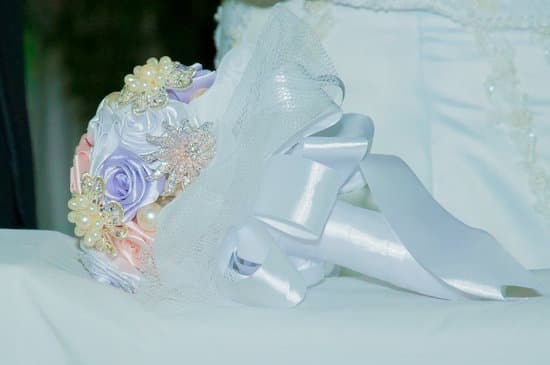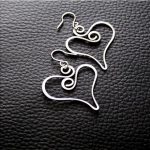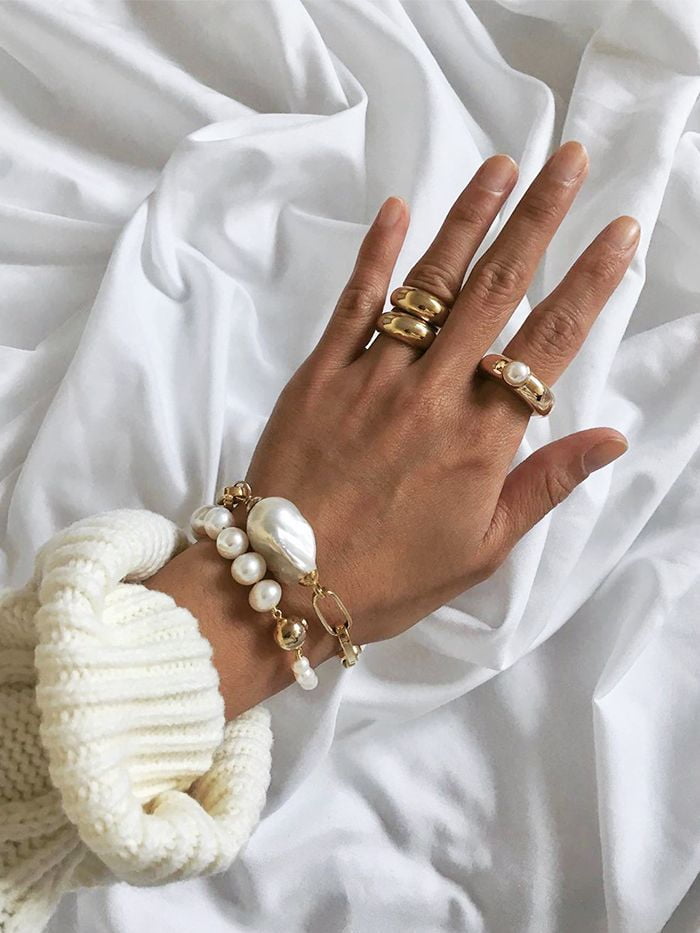Are you interested in learning how to make a bead board for jewelry? Whether you’re a seasoned jewelry maker or just starting out, having a bead board can be incredibly helpful in the design and creation process. In this article, we will discuss the importance of a bead board in jewelry making and provide step-by-step instructions for creating your own.
A bead board is an essential tool for any jewelry maker as it allows for precise and organized arrangement of beads, charms, and other components before they are strung together. It helps to plan and visualize the final design, ensuring that the finished piece turns out exactly as intended. By making your own bead board, you can customize it to suit your specific needs and preferences.
In the following sections, we will cover the materials needed for making a bead board, provide detailed step-by-step instructions on how to construct one, offer tips for designing and measuring your bead board effectively, share ideas for organization and storage, discuss customization options, as well as provide maintenance and care tips. Additionally, we will explore the benefits of using a bead board for jewelry making and how it can enhance your crafting experience.
So let’s get started on creating your very own custom bead board.
Materials Needed
When it comes to making your own bead board for jewelry, having the right materials is crucial to ensure a successful and functional end product. Here is a comprehensive list of all the materials you will need to make your very own bead board:
Materials:
1. Corkboard or Foam Board: This will serve as the base of your bead board. You can choose a size that best fits your workspace and crafting needs.
2. Ruler: A ruler is essential for measuring and marking the lines on your bead board.
3. Pencil: Use a pencil to mark measurements and designs on the corkboard or foam board.
4. Straight Edge: A straight edge will help you create straight lines and precise measurements on your bead board.
5. Pins or Tacks: These will be used to secure your beads in place as you design and lay out your jewelry pieces.
6. Measuring Tape: A measuring tape will come in handy for larger projects and precise measurements.
7. Decorative Paper or Fabric (Optional): If you want to add a decorative touch to your bead board, consider using paper or fabric to cover the corkboard or foam board.
Now that you have gathered all of these materials, you are ready to begin constructing your very own bead board for jewelry making.
By following these steps, you can create a customized bead board that suits your unique crafting needs and personal style.
Remember, when making a bead board for jewelry, it’s important to consider not just how it looks but also how practical it is for organizing and designing beautiful jewelry pieces.
Step-by-Step Instructions
Are you a jewelry maker looking to create your own custom bead board? This section will provide you with detailed step-by-step instructions on how to construct a bead board for all your jewelry making needs. By following these instructions, you can easily create a personalized bead board that fits your unique style and requirements.
Gather the Materials
Before you begin constructing your bead board, it’s essential to gather all the necessary materials. You will need a large piece of sturdy cardboard or foam board as the base of your bead board. Additionally, gather a ruler, pencil, measuring tape, and adhesive material such as glue or double-sided tape. Don’t forget to have a variety of small compartments or containers for organizing beads and other jewelry-making supplies.
Measure and Mark the Board
Using a ruler and pencil, carefully measure and mark the dimensions of the compartments on your base material. It’s important to plan out the layout of your bead board based on the type of jewelry you typically make. Consider including sections for different sizes and shapes of beads, as well as spaces for tools such as needles and thread. Take your time to ensure accuracy in measurements and markings.
Assemble the Compartments
Once you have marked out the compartments on your base material, it’s time to assemble them. Use adhesive material such as glue or double-sided tape to secure small containers onto the board. These compartments will serve as storage for your beads and other materials while creating jewelry. Make sure they are securely attached to prevent any movement or shifting during use.
By following these step-by-step instructions, you can create a functional and personalized bead board for all your jewelry making projects. With careful planning, precise measurements, and attention to detail, you can design a bead board that suits your specific needs and preferences.
Design and Measurement Tips
When designing and creating your own bead board for jewelry making, it’s important to consider the functionality and layout that best suits your needs. One of the first tips for optimal functionality is to carefully measure and plan the layout of your bead board. This will ensure that you have enough space for arranging and organizing your beads, findings, and other jewelry-making materials.
Consider adding compartments or sections to your bead board to separate different types of beads or components. This will make it easier to locate specific items as you work on your jewelry projects. Additionally, incorporating measurement markings on the surface of your bead board can be incredibly useful when designing and creating consistent jewelry pieces.
Another important tip for designing your bead board is to make sure that the surface is smooth and easy to clean. Using a smooth material such as wood or plastic will prevent beads from getting stuck in any crevices or rough surfaces, making it easier to move them around as needed.
Lastly, when customizing the design of your bead board, opt for a shape and size that works best for you. Whether you prefer a rectangular, square, or circular shape, choose what fits comfortably within your workspace while still providing enough room for all of your essential materials.
By implementing these design and measurement tips into the construction of your bead board, you can create a functional and personalized tool that will enhance your jewelry-making experience.
Organization and Storage
Proper Storage
After creating your personalized bead board for jewelry making, it’s important to ensure that you store it properly to keep it in good condition. A simple way to store your bead board is by hanging it on a hook or pegboard in your crafting area. This not only keeps it easily accessible, but also prevents it from getting damaged or scratched.
Utilize Dividers and Containers
To keep your beads and other jewelry-making supplies organized while using the bead board, consider incorporating dividers and small containers onto the surface of the board itself. This allows you to keep different types of beads separated and within easy reach as you work on your jewelry projects.
Clean Up Regularly
It’s easy for small beads and supplies to get scattered while working with them on a bead board. To maintain organization, make sure to clean up regularly after completing each project. Store any leftover beads and materials in their respective containers so everything is ready for the next time you need to use your bead board.
By following these tips for organizing and storing your bead board, you can make sure that it remains easily accessible and in good condition for all of your jewelry making projects.
Customization Options
When it comes to making a bead board for jewelry, there are various ways you can customize it to suit your personal preferences and needs. One option is to add compartments or sections for different types and sizes of beads, making it easier to organize and work with them. You can also consider adding measurement markings or grids to the surface of the bead board, allowing for more precise and consistent designs.
Another way to customize your bead board is by adding a cushioned surface, which can help prevent beads from rolling around and getting lost. This can be especially useful when working with small or delicate beads that are prone to slipping. Additionally, you may want to personalize the appearance of your bead board by painting or decorating it with patterns or designs that reflect your style and creativity.
In terms of materials, consider using a lightweight but durable material such as foam board or corkboard for your DIY bead board. These materials are easy to work with and can be easily customized with adhesive paper, fabric, or paint. It’s important to take into account the size of your workspace and storage options when customizing your bead board, ensuring that it fits comfortably in your crafting area and can be easily stored when not in use.
| Customization Option | Details |
|---|---|
| Compartmentalizing | Add separate sections for different types/sizes of beads |
| Measurement Markings/Grids | Add markings for precise design and layout |
| Cushioned Surface | Add a soft surface to prevent bead rolling |
Maintenance and Care
Maintaining and caring for your bead board is essential to ensure its longevity and functionality. Here are some tips on how to properly maintain and care for your bead board:
1. Clean Regularly: It’s important to clean your bead board after each use to remove any leftover beads, stringing materials, or any dirt or dust that may have accumulated. Use a soft cloth or brush to gently wipe down the surface of the board.
2. Store Properly: When not in use, store your bead board in a cool, dry place away from direct sunlight. This will help prevent warping or discoloration of the board over time.
3. Avoid Harsh Chemicals: When cleaning your bead board, avoid using harsh chemicals or abrasive cleaners as these can damage the surface of the board. Instead, opt for mild soap and water to gently clean the surface.
4. Check for Damage: Regularly inspect your bead board for any signs of damage such as cracks, warping, or loose fittings. If you notice any issues, address them immediately to prevent further damage.
5. Use Protective Coverings: Consider using a protective covering or case for your bead board when transporting it or storing it away. This will help protect the surface from scratches and other forms of damage.
By following these maintenance and care tips, you can ensure that your bead board remains in excellent condition for years to come, allowing you to continue creating beautiful jewelry pieces with ease and efficiency.
Benefits of Using a Bead Board
Using a bead board for jewelry making offers numerous advantages that can greatly improve your crafting experience. One of the primary benefits is the ability to visually plan and lay out your designs before stringing the beads, allowing you to see how the finished piece will look.
This helps in avoiding mistakes and ensures that the final product meets your vision. Additionally, a bead board helps in organizing and arranging beads, keeping them in place and preventing them from rolling away while you work on your project.
Another advantage of using a bead board is the capability to measure the length of your design accurately. Most bead boards come with measurement markings along the edges, making it easier to determine the right length for your bracelet, necklace, or any other jewelry piece you are creating. This precision is essential in ensuring that your finished product fits perfectly when worn.
Furthermore, utilizing a bead board for jewelry making can save time and effort by streamlining the process of creating multiple pieces with similar designs. You can leave your work in progress on the board without worrying about disarrangement and easily pick up where you left off at any time. The convenience offered by a bead board not only improves your efficiency but also enhances the overall enjoyment of crafting beautiful jewelry pieces.
| Advantages | Description |
|---|---|
| Visual Planning | Able to see designs before stringing beads |
| Accurate Measurement | Measurement markings ensure precise sizing |
| Time-Saving | Streamlines creating multiple pieces with similar designs |
Conclusion
In conclusion, creating your own bead board for jewelry making can be a fun and rewarding experience. By following the step-by-step instructions and design tips provided in this article, you can personalize your bead board to suit your specific needs and preferences. Not only does making your own bead board allow for customization, but it also ensures that you have a tool that is practical and functional for your particular jewelry-making projects.
It’s important to remember that proper organization and storage of your bead board is essential for maintaining its longevity and usability. By following the maintenance and care tips outlined in this article, you can ensure that your bead board remains in optimal condition for years to come. Additionally, taking advantage of the customization options can further enhance your crafting experience and make the process even more enjoyable.
In summary, creating a bead board for jewelry making offers numerous benefits, from personalized design options to improved organization and functionality. With the materials list, detailed instructions, and design tips provided here, you have all the information you need to get started on constructing your very own bead board. So why not give it a try? Start creating your custom bead board today and elevate your jewelry-making experience to a whole new level.
Frequently Asked Questions
What Can I Use Instead of a Bead Mat?
Instead of a bead mat, you can use materials like a towel, a piece of felt, or even a silicone baking mat. These alternatives provide a soft and non-slip surface for working with beads without them rolling away.
How Do You Make a Beading Mat?
To make a beading mat, you can start by cutting a piece of fabric to your desired size. Then, you can hem the edges to prevent fraying. You can also add a non-slip backing to keep the mat in place while working on your beading projects.
Are Bead Boards Worth It?
Bead boards can be worth it if you do a lot of beadwork or jewelry making. They provide organized compartments for different types and sizes of beads, helping to keep your work area tidy and preventing beads from rolling away.
The measurements on the board also help in designing and laying out patterns for your projects. Overall, if you frequently work with beads, investing in a bead board can be beneficial in the long run.

Welcome to my jewelry blog! My name is Sarah and I am the owner of this blog.
I love making jewelry and sharing my creations with others.
So whether you’re someone who loves wearing jewelry yourself or simply enjoys learning about it, be sure to check out my blog for insightful posts on everything related to this exciting topic!





